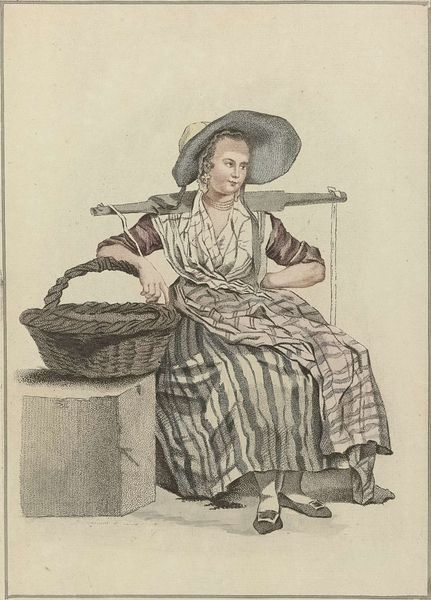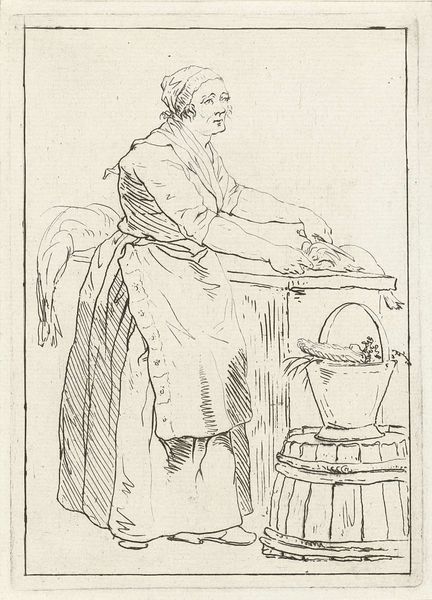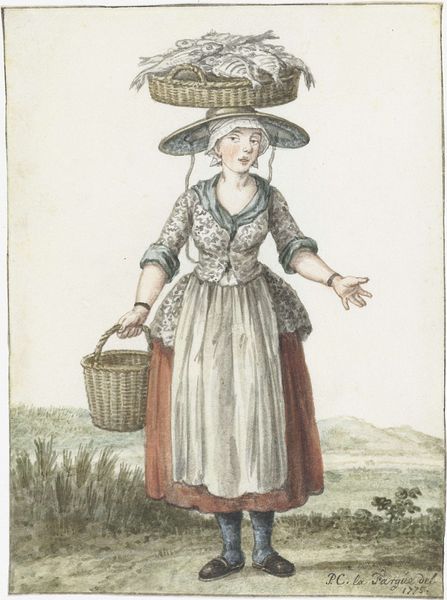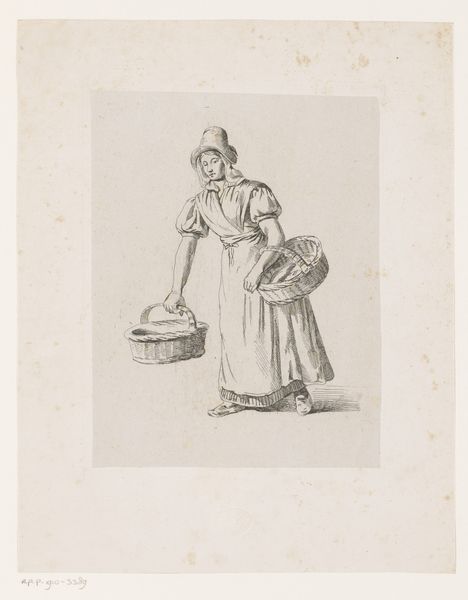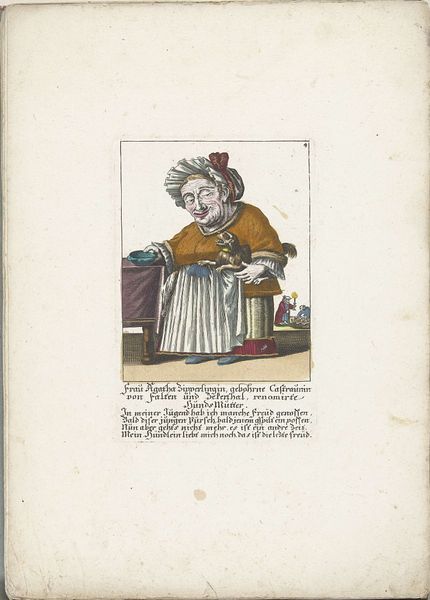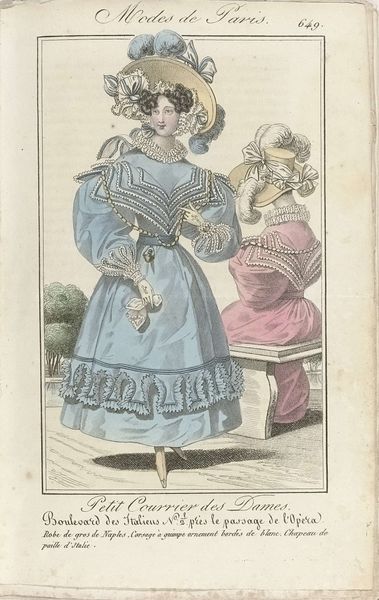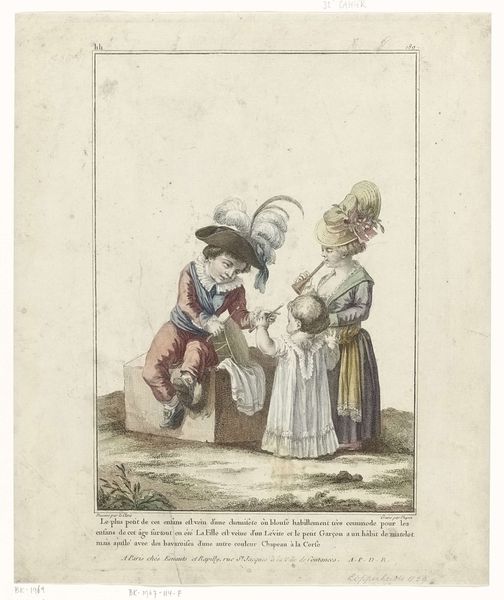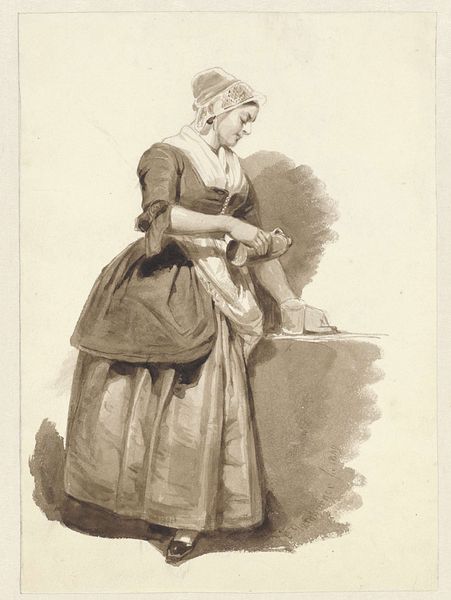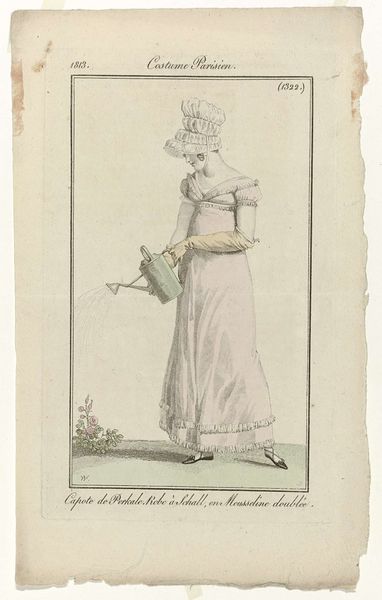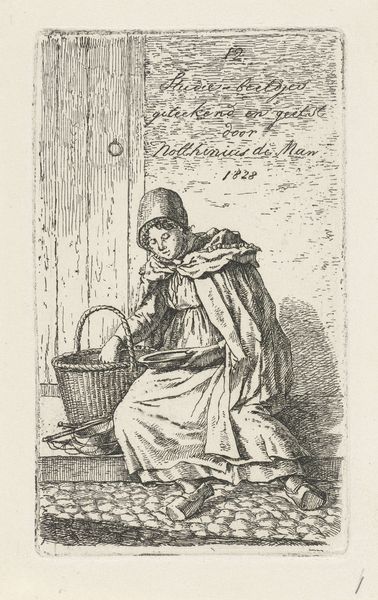
print, watercolor
# print
#
figuration
#
watercolor
#
coloured pencil
#
watercolour illustration
#
genre-painting
#
watercolor
Dimensions: height 190 mm, width 130 mm
Copyright: Rijks Museum: Open Domain
Curator: Here we have Laurent Guyot's "La Mde. d'Huitres" from 1786, currently held in the Rijksmuseum. It's rendered with watercolor and printmaking techniques. What strikes you initially? Editor: It feels surprisingly light and airy. The washes of color give it an almost ephemeral quality. The subject, a woman with a basket of oysters, seems to exist in a world of gentle tones and textures. Curator: The materiality supports that interpretation, wouldn't you say? The gentle strokes and translucent nature of the watercolor emphasize delicacy and contribute to a sense of refined observation. Guyot uses color to build form without demanding hard outlines. Editor: Absolutely. Oysters are traditionally associated with Aphrodite and sensual appetites. Seeing them here, in this rather domestic scene, it presents a compelling interplay between earthly work and underlying desire. What I love is how the text at the bottom even talks about how oysters need to "refresh." Curator: Yes, and the basket takes on an interesting weight when understood as a visual container for that deeper symbolic complex. Note how the geometric structuring contributes to its sense of formal rigor, grounding it against the organic forms within. Editor: Indeed, it reminds me of how genre painting—and prints like this one—were vehicles to talk about the cultural and social happenings of the era. It becomes a signifier of status and the rise of the middle class. I wonder what type of symbolic oyster meanings people in the 18th century may have recognized versus those we bring today. Curator: Food has consistently played important semiotic and material roles across social and cultural arenas. The treatment of line, moreover, serves to create a hierarchy, emphasizing certain figures over others to support Guyot's centralizing vision. Editor: And even today oysters maintain some association with specialness. They feel connected with luxurious nights, a delicacy shared in an intimate encounter, for example. Thinking about the artwork now, my mind leaps to future archeologists analyzing contemporary oyster depictions and divining similar connections. Curator: Ultimately, this piece balances the aesthetic refinement of its time with these echoes of much older traditions and evolving connotations. Editor: It's remarkable to witness how different eras overlay upon each other and that one seemingly simple image.
Comments
No comments
Be the first to comment and join the conversation on the ultimate creative platform.
